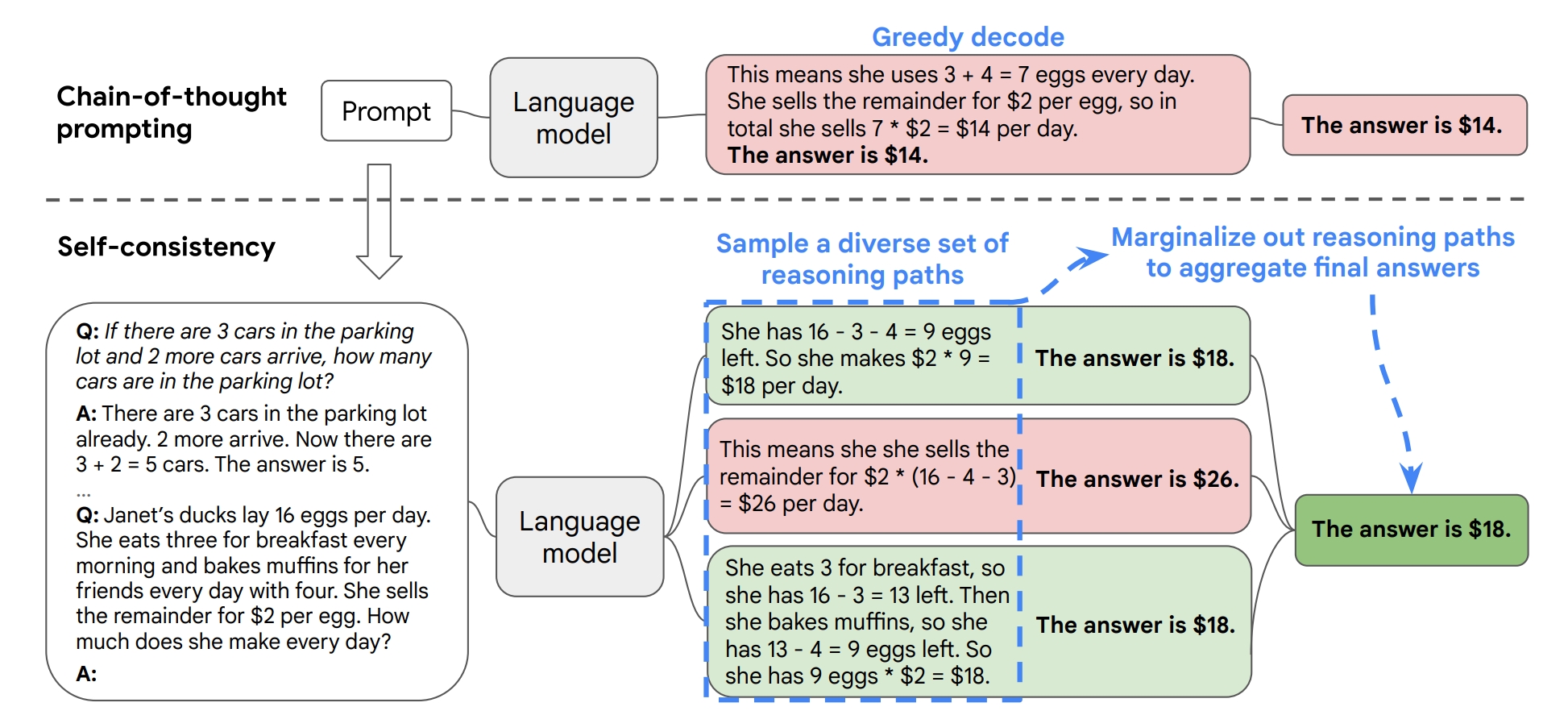Self-Consistency
Self-Consistency 自洽是对 Chain of Thought 的一个补充,它能让模型生成多个思维链,然后取最多数答案的作为最终结果。
按照 Xuezhi Wang 等人在 2022 年发表的论文 表明。当我们只用一个逻辑链进行优化时,模型依然有可能会算错,所以 XueZhi Wang 等人提出了一种新的方法,让模型进行多次运算,然后选取最多的答案作为最终结果:

就我目前使用下来,在 ChatGPT 上,其自洽性非常高,暂时没有遇到过出现多种答案的情况。查阅多份资料,我发现这个自洽性可能更多的用于评估模型的优劣,好的模型一般自洽性会比较高。
在此案例中,考虑如下多步推理问题:
Using self-consistency, the language model generates multiple reasoning paths:
翻译过来则为:
使用 Self-consistency,语言模型生成多个推理路径:
Self-consistency 从生成的多个推理路径中选择最一致的答案。在这个例子中,推理路径 A 和 B 都得出相同的答案(8 个水果)。可以看到这种做法增加了模型对最终答案正确的信心。
最后更新于